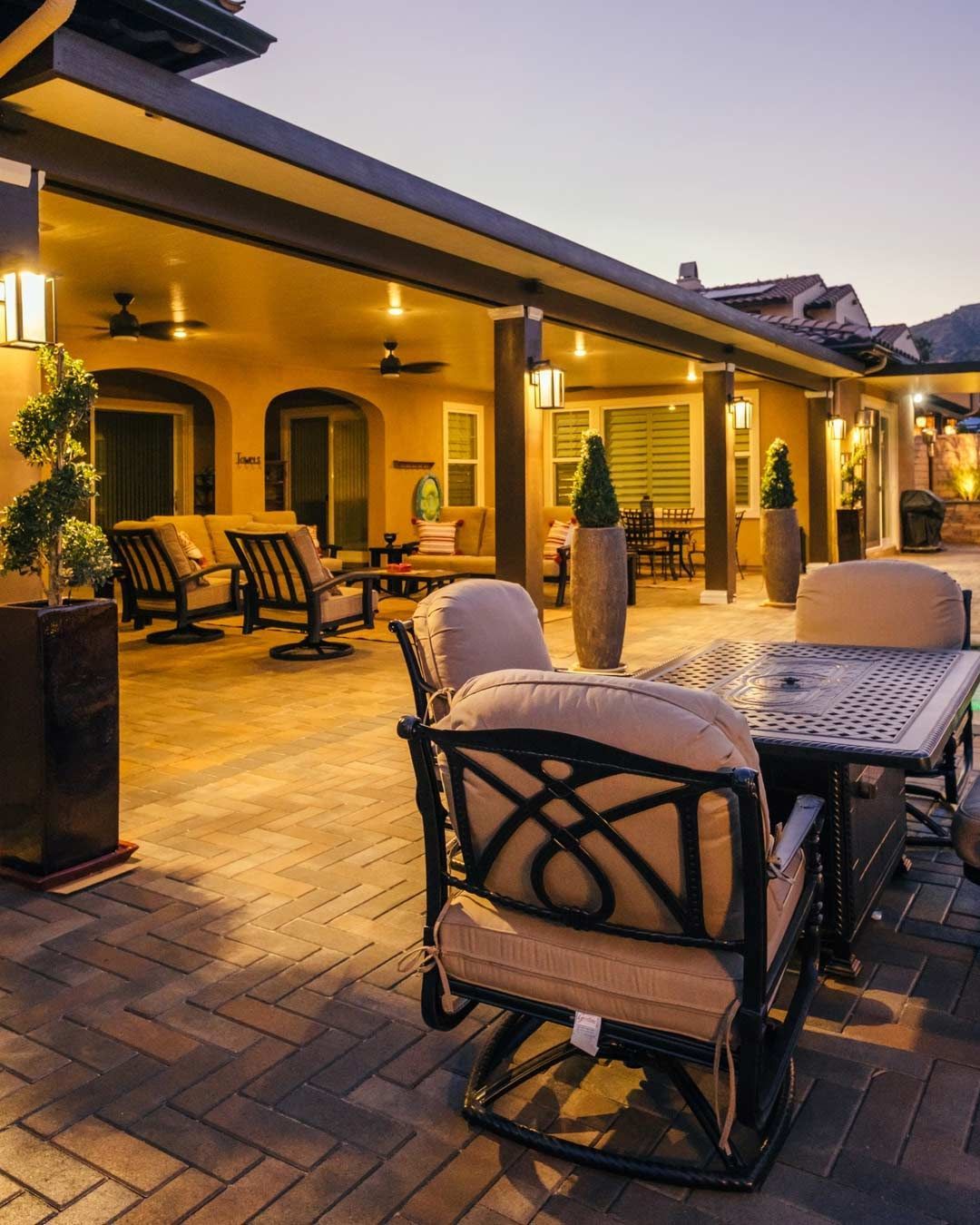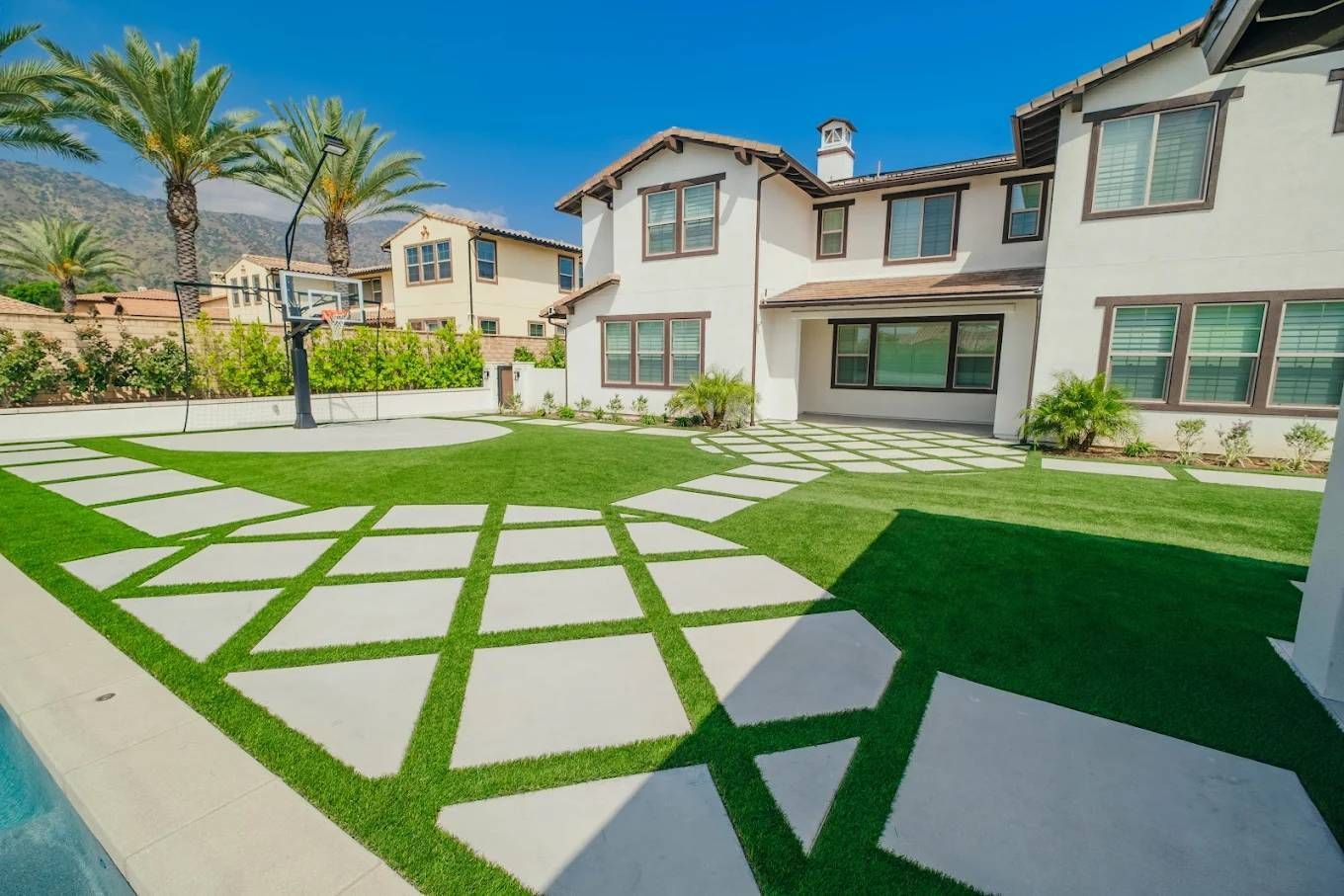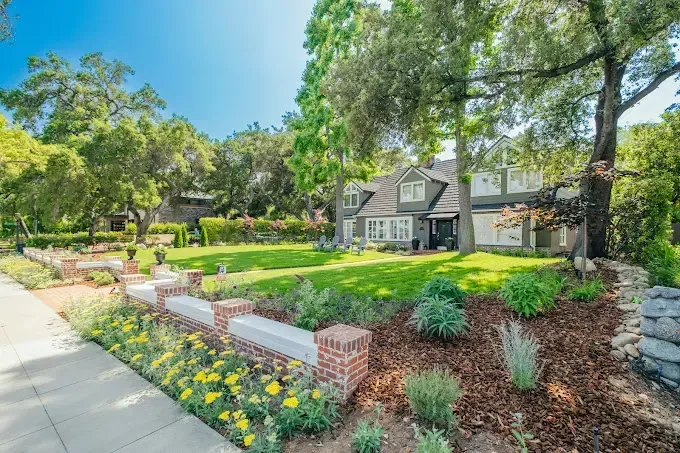Outdoor Lighting Design: Creating Ambiance and Security in Your Landscape

Picture this: you're hosting a backyard dinner party, the sun starts to set, and instead of everyone shuffling inside, your guests are actually more enchanted by your outdoor space. That's the magic of well-designed landscape lighting. At Vivid Landscape, we've transformed countless Southern California properties from basic yards into stunning evening retreats, and we're here to share what we've learned about creating outdoor lighting that's both beautiful and functional.
Here's the thing about outdoor lighting—it's not just about slapping a few spotlights around your yard and calling it a day. Good landscape lighting is an art form that balances ambiance, security, and practicality. When done right, it can completely transform how you experience your outdoor space and significantly boost your property value. Let's dive into how to get it right.
Why Outdoor Lighting Matters More Than You Think
Before we get into the fun design stuff, let's talk about why outdoor lighting is such a game-changer. First and foremost, it extends your living space. That beautiful patio you invested in? With proper lighting, it becomes usable well into the evening hours. Your landscape investment suddenly works harder for you.
Then there's the security aspect. Well-lit properties are statistically less likely to experience break-ins. Motion sensor lights near entry points, pathway lighting that eliminates dark corners, and strategic accent lighting all contribute to a safer home environment. But here's the kicker—security lighting doesn't have to look like a prison yard. With smart design, your security features can enhance your landscape's beauty.
And let's be honest about curb appeal. A thoughtfully lit landscape at night is absolutely stunning. It creates depth, highlights your favorite plants and architectural features, and makes your home stand out in the neighborhood for all the right reasons.
The Foundation: Understanding Light Layers
Professional lighting designers think in layers, and your landscape should too. Think of it like interior design—you wouldn't light a room with just one overhead bulb, right? The same principle applies outdoors.
Ambient lighting is your foundation layer. This provides general illumination and sets the overall mood. Think soft, diffused light that makes the space feel welcoming without being harsh. String lights, lanterns, or strategically placed uplights can create this base layer.
Task lighting is all about function. This includes pathway lights that help people navigate safely, lights near outdoor kitchens or seating areas where you need to see what you're doing, and entry lighting that illuminates door locks and house numbers.
Accent lighting is where the magic happens. This is your spotlight on that gorgeous Japanese maple, the subtle wash lighting on your stone wall, or the dramatic uplighting on your home's architecture. Accent lighting creates visual interest and highlights the features you're most proud of.
Strategic Placement: Where to Put Your Lights
The key to great landscape lighting isn't necessarily having more lights—it's about putting them in the right places. Here's what we've learned from years of lighting Southern California properties:
Start with safety priorities. Light all pathways, steps, and changes in elevation. Nobody wants a guest taking a tumble because they couldn't see that step down to your patio. Use pathway lights or bollard lights spaced about 6-8 feet apart for consistent illumination without creating a runway effect.
Highlight your home's architecture. Uplighting on interesting architectural features like columns, archways, or textured walls creates dramatic shadows and depth. Just remember—subtle is usually better. You want to enhance features, not blind the neighbors.
Showcase your landscape stars. Got a specimen tree you love? A beautiful fountain? An interesting sculpture? These are perfect candidates for accent lighting. Use spotlights or uplights to make them nighttime focal points.
Create gathering spaces. If you have a patio, deck, or outdoor kitchen, make sure it's well-lit for functionality but keep the lighting warm and inviting. Nobody wants to feel like they're eating under fluorescent office lights.
Choosing the Right Fixtures and Bulbs
With so many lighting options available, it's easy to get overwhelmed. Here's how to navigate the choices without losing your mind:
LED is your friend. Yes, the initial cost is higher, but LEDs last significantly longer, use way less energy, and produce less heat. In Southern California's climate, that last point matters more than you might think. Plus, LED technology has come a long way—you can get warm, inviting light that doesn't feel cold or harsh.
Consider fixture materials carefully. You're investing in something that needs to withstand weather year-round. Look for fixtures made from materials like brass, copper, or high-quality aluminum that can handle UV exposure without fading or cracking. Cheap plastic fixtures might save money upfront, but they'll cost you more in replacements and maintenance.
Think about beam angles. Narrow beam lights (15-30 degrees) are great for spotlighting specific features. Wide beam lights (60+ degrees) work better for general area lighting. Medium beam lights (30-60 degrees) are perfect for lighting larger landscape features like groups of plants or sections of fencing.
Color Temperature: Setting the Right Mood
This might seem like a small detail, but the color temperature of your lights dramatically affects the feel of your outdoor space. Measured in Kelvin (K), color temperature ranges from warm (lower numbers) to cool (higher numbers).
For most landscape applications, you'll want lights in the 2700K to 3000K range. This creates warm, inviting light that complements most landscape materials and doesn't feel stark or commercial. Save the cooler temperatures for security lighting where you need clear visibility over ambiance.
Smart Controls: Making Your Life Easier
Modern outdoor lighting doesn't have to mean walking around flipping switches every evening. Smart controls can automate your lighting, adjust brightness levels, and even change colors for special occasions.
Timer systems are the basic starting point—set your lights to turn on at dusk and off at a specific time. Photocell sensors automatically adjust to seasonal changes in daylight. Smart home integration lets you control everything from your phone, set different lighting scenes for different occasions, and even adjust your lighting when you're away for security.
Avoiding Common Lighting Mistakes
After years of fixing poorly designed lighting systems, we've seen the same mistakes repeatedly. Here's what to avoid:
Overlighting is probably the biggest mistake. More lights doesn't equal better design. Too much light creates glare, washes out the features you're trying to highlight, and can actually make your space feel less inviting.
Pointing lights in the wrong direction. Lights that shine directly into windows, across property lines, or into gathering spaces create problems. Always consider where the light is going, not just what it's lighting.
Ignoring maintenance access. If you can't easily reach your fixtures for bulb changes and cleaning, you won't maintain them properly. Plan for access when choosing locations.
Choosing style over function. That gorgeous fixture might look amazing, but if it doesn't provide the light you need where you need it, it's not the right choice.
Working with Professionals vs. DIY
Some landscape lighting projects are perfect for DIY—think solar pathway lights or string lights for a patio. But more complex systems involving electrical work, trenching for wiring, and strategic design really benefit from professional installation.
At Vivid Landscape, we often see homeowners who started with a DIY approach and then called us when they realized they needed more comprehensive solutions. There's no shame in that game—sometimes you need to live with a space to understand how you really want to use it.
Professional installation also ensures your system is properly designed for expansion. Maybe you're starting with basic pathway lighting, but later you want to add accent lighting or outdoor speakers. A professional can wire the initial system with future additions in mind.
Making the Investment Work for You
Quality landscape lighting is definitely an investment, but it's one that pays dividends in multiple ways. Beyond the immediate benefits of extended outdoor living and improved security, good lighting significantly boosts property value. Real estate professionals consistently cite lighting as one of the top features that help homes sell faster and for better prices.
Start with the essentials—safety lighting for pathways and entrances—then build your system over time. This spreads the investment across multiple seasons while letting you live with each phase and determine what you want to add next.
Ready to Light Up Your Landscape?
Great outdoor lighting transforms your property from a daytime-only space into a 24/7 extension of your home. Whether you're looking to create a romantic dinner setting, ensure safe navigation around your property, or simply showcase the landscape you've worked hard to create, thoughtful lighting design makes it all possible.
At Vivid Landscape, we've helped homeowners throughout Los Angeles County, Orange County, and the Inland Empire discover the potential of their outdoor spaces after dark. From subtle pathway lighting to dramatic architectural illumination, we design lighting systems that enhance both beauty and function.
Ready to see your landscape in a whole new light? Contact Vivid Landscape today for a consultation. Let's design an outdoor lighting system that transforms your property and extends your living space well into the evening hours.













